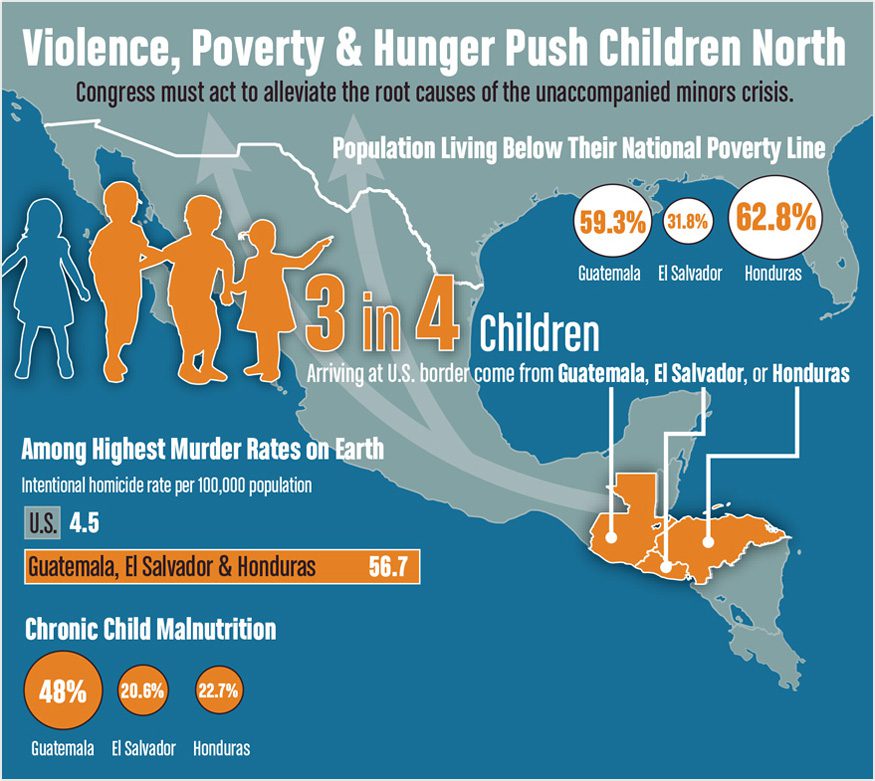Immigration is a hunger issue. Addressing hunger on both sides of the border is essential to reaching a long-term solution.
Undocumented immigrants leave their home countries to escape deep hunger and poverty, but many remain at high risk of hunger and poverty once they arrive in the United States.
Making improvements in the available paths to legal immigration, and protecting all workers in the United States regardless of immigration status, are critical to reducing hunger in our country. Supporting other countries in reducing hunger — by fostering environments of opportunity and stability — is important for U.S. security, and it also enables people to stay in their home countries. This requires responding to the push factors that force people to flee hunger, poverty, and violence in the first place.
Taking this approach will enable the United States to have an immigration strategy that is coherent domestically and internationally, which in turn will help put us on track to end hunger here and abroad by 2030.
Undocumented immigrants are twice as likely to be hungry and up to three times as likely to live in poverty.



